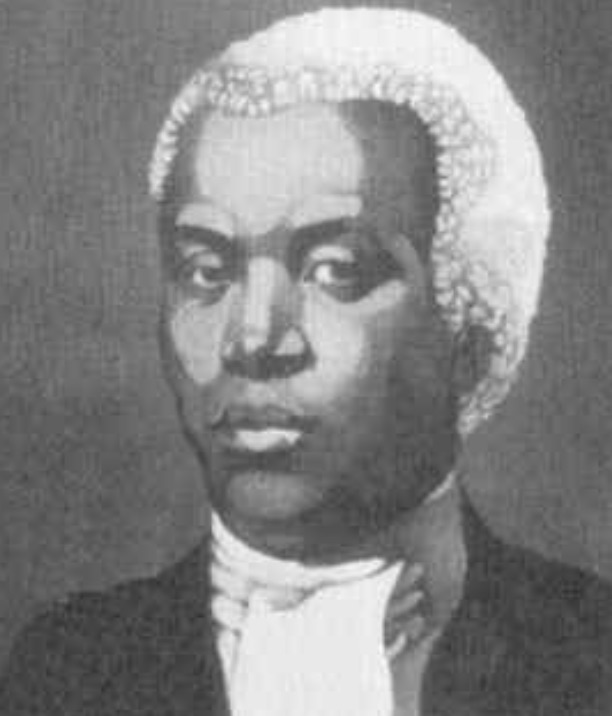
Benjamin Banneker was born on November 9, 1731, in Ellicott’s Mills, Maryland, which was then a British colony. He was the son of freed African American parents. His grandmother, Molly Welsh, was a former indentured servant. Banneker received very little formal education, but he learned to read and write at an early age and was an avid learner. He borrowed books and taught himself various subjects, including mathematics, astronomy, and surveying. When he was about 22 years old, Benjamin, modeling the structure of a pocket watch, constructed a wooden clock that was able to strike on the hour. The clock was so well made that it would eventually outlive him.
When Benjamin’s father died in 1759, Benjamin moved in with his mother and sisters. An entry for his property in a 1773 Baltimore County tax list identified Banneker as the only adult member of his household. Meanwhile, in 1772, a Quaker family, named Ellicott, had purchased land along the Patapsco Falls near Banneker’s farm on which to construct gristmills around which Ellicott City eventually would eventually develop. The Ellicotts believed in racial equality and George Ellicott eventually befriended Benjamin when he discovered that they shared an interest in astronomy. In 1788, when Benjamin was 58 years old, George lent him the mathematics books he needed to begin a more formal study of astronomy. During the following year, Banneker sent George his calculations, predicting the date of the next solar eclipse. Two years later, Benjamin Banneker submitted, for publication in an almanac, tables giving the trajectories of many celestial stars and planets, but the submission was rejected and he was unable to have this work published.
In early 1791, Thomas Jefferson, as U.S, Secretary of State, asked Major Andrew Ellicott, nephew of George Ellicott, to survey what would become the new federal district in Washington known today as Washington D. C. In February of that year, Andrew Ellicott hired Benjamin to assist in the initial survey of the federal district’s boundaries. For the next four months, Banneker worked on the project, but by the spring of that year, he had to leave the project and return to Ellicott’s Mills to attend to the farm chores that supported his livelihood.
During the remainder of that year, Banneker made calculations that predicted eclipses and planetary conjunctions that were to be included in an almanac for the year of 1792. Andrew Ellicott sent Banneker’s information to James Pemberton, the president of the Pennsylvania Society for Promoting the Abolition of Slavery. Pemberton, in turn submitted it to William Waring, an esteemed mathematician, and David Rittenhouse a prominent American astronomer, to confirm the accuracy of Banneker’s calculations. Waring endorsed Banneker’s work, stating, “I have examined Benjamin Banneker’s Almanac for 1792, and am of the opinion that it well deserves the Acceptance and Encouragement of the Public.”
Banneker’s 1792 Almanac and Ephemeris was the first in a six-year series of almanacs that were printed and distributed throughout Pennsylvania, Delaware, Maryland, and Virginia. His almanacs contained information on tides, eclipses, astronomical calculations, and other useful data for farmers and the general public. He dedicated his almanacs to the cause of equality and peace. Benjamin Banneker was an outspoken critic of slavery and wrote several letters and essays on the subject. In 1791, he wrote a letter to Thomas Jefferson, then the Secretary of State, urging him to reconsider his views on slavery and the equality of all people.
When Benjamin Banneker was no longer able to do the necessary farm chores, he sold his farm to the Ellicott family with the proviso that he be able to live out his life on that property. Benjamin Banneker passed away on October 9, 1806, at the age of 74. On the day of Banneker’s funeral, the farm house burnt to the ground, taking with it all but one of Banneker’s journals that was stored off site. The surviving manuscript journal contains mathematical puzzles and their solutions, including the following algebra problem:
Divide 60 into four such parts that the first being increased by 4, the second decreased by 4, the third multiplied by 4, the fourth part divided by 4, that the sum, the difference, the product and the quotient shall be one and the same number.
Banneker’s work and contributions to science and his advocacy for civil rights made him an important figure in American history. He is celebrated for his achievements and is considered a symbol of African American achievement and intellectual excellence. Furthermore, Benjamin Banneker’s life and work serve as a testament to the power of self-education, determination, and the ability to overcome societal obstacles to make significant contributions to science and society.
